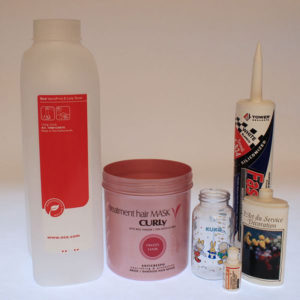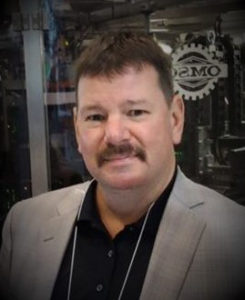
Screen printing is a natural choice when it comes to printing on plastic parts – particularly for cylindrical containers. However, other processes – such as digital and flexo printing – are gaining in popularity as the market shifts, technology advances and customer needs change. For instance, the increase in demand for containers with photorealistic images has created a niche for flexo printing to thrive. Plastics Decorating sat down with OMSO North America CEO Scott Frey to consider the advancements in screen printing technology as it applies to cylindrical containers, as well as how it can be utilized alongside other technologies to the benefit of manufacturers and their customers.
What are the advantages of screen printing vs. flexo vs. digital inkjet for cylindrical cups and containers?
The screen printing process lays down a significantly thicker ink film, allowing for superior opacity compared to flexo. This is an advantage when printing on darker color substrates. Meanwhile, digital can lay down a significant ink film but tends to have a translucent appearance due to the use of process color inks. Digital also lacks crisp edge definition when compared to screen printing.
What features have been introduced for screen printing, specifically for cylindrical cups and containers, that have helped automate the process?
The most significant advancements in screen print technologies are the affordability of servo drives and advancements in the software controlling them. With equipment of the past, changeovers and all the adjustments to the machine or process were done with knobs, wrenches, gears and tooling. With servo technology, these adjustments are made with the push of a button and quick-change “toolless” fixtures.
Human interaction with wrenches, knobs and tools is a thing of the past. With the push of a single button, something as simple as a flood bar or as advanced as UV LED power settings are programmed and saved for recall, and the SKU is scheduled. This results in changeover time reduced to mere minutes instead of entire shifts.
Is there equipment on the market today that combines digital and screen printing in a single machine?
The introduction of combination machines is on the horizon. The screen printing process is a natural choice for printing text, ingredient blocks, UPC codes and those images requiring excellent edge definition.
Digital, meanwhile, is a natural process for detailed pictures and high-resolution, photo-like images. The two processes on the same machine platform is a fantastic combination.
What new applications are being developed for printed cups and containers? What specific industries have seen growth?
Recently there has been a significant increase in the demand for photorealistic direct printing on tapered sidewall containers. Stadium cups, yogurt cups and the like have seen a need for alternatives to in-mold labeling. High speed (indirect) flexo also has gained popularity in these markets.
This technology uses a blanket in between the flexo plate and the cup, much like offset printing. This allows for the resolution of flexo with the flexibility of offset on containers with less than perfect sidewall thickness and distribution. The final key is the method of printing each color and drying it before the next color is applied. Even on dark-colored substrates with extremely accurate 7-color presses, hexachrome printing can be utilized.
Hexachrome goes a step beyond 4-color process printing. Fundamentally, hexachrome adds two additional colors to the format of cyan, magenta, yellow and black by adding orange and green. Process printing essentially becomes 6-color process printing, which greatly expands the achievable color palette. With indirect flexo and hexachrome printing, a near-photorealistic image is attained with much less cost than in-mold labeling.
How has the introduction of UV LED technology changed screen printing inks?
Screen inks have changed dramatically in the past five years. The introduction of new UV LED photoinitiator packages has allowed the use of UV LED emitters in place of mercury or metal halide UV curing systems. The advantages are numerous, and safety is enhanced.
For example, UV LED is very safe and efficient with no ozone, heat, microwave, mercury, stray light, exhaust fans, hot surfaces, and with little noise and no roof penetration for ducting. Savings on electrical absorption is a whopping 65%, and no heat means less scrap. The market transition to UV LED is imminent.
What are the latest automated vision inspection systems contributing to the market?
Most notable are increases in print quality delivered to the end user. PC-based inspection units don’t become fatigued or make mistakes like human line inspectors do. The quality is controlled to a software-based quantification; there are no judgment calls on quality criteria. The consistency of print quality is drastically improved. Second is the labor savings. The quality is automatically quantified when automation, such as robotic case packers, can be utilized.
For more than 65 years, OMSO SpA has been designing and manufacturing advanced machines to print on objects and containers that come in a variety of shapes and sizes. OMSO focuses on four basic processes: dry-offset printing, flexographic printing, digital printing and screen printing. In support of growing demand, OMSO North America Inc. was incorporated in 2005. For more information, visit www.omso.it/en.



